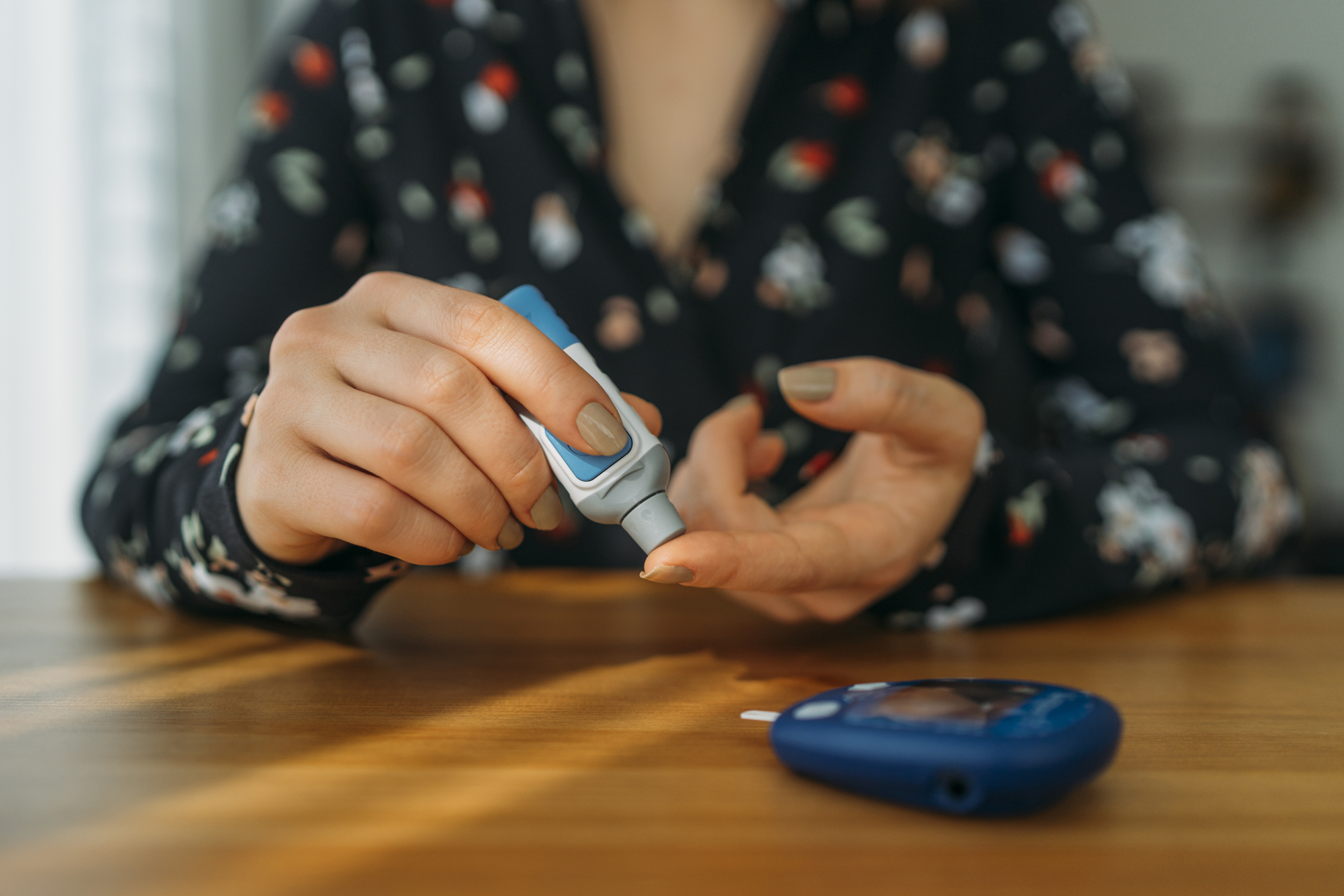New technology provides convenient options for helping manage diabetes

We recently spoke with Jennifer Cherolis, registered nurse, and certified diabetes care and education specialist at UK HealthCare, about the importance of diabetes education and technology.
As an outpatient diabetes educator at UK Barnstable Brown Diabetes Center, Cherolis provides diabetes education services for pediatric patients, adults, and pregnant women. She helps patients at all different stages of diabetes or gestational diabetes. Cherolis works with patients with prediabetes to reduce their risk of developing diabetes in a year-long Diabetes Prevention Program. Cherolis also teaches individual and group diabetes self-management education classes to help patients learn skills to better manage their diabetes.
One essential part of diabetes education is ensuring patients are comfortable with the technology necessary to manage the condition. Diabetes technology has come a long way over the past few years. With various options on the market, you can choose the device that works best for you and your budget.
What are some advantages of new technology?
1. Can alert when high/low blood sugar is detected
2. Information can be constantly monitored, and it helps patients see trends
3. Helps caregivers and family members keep up with blood sugar changes
4. Constantly changing and becoming more efficient with time
5. Allows patients to make educated decisions
What are the two main categories of diabetes technology?
1. Blood glucose measurement devices
There are two main types of blood glucose meters: continuous glucose monitors, which check blood glucose automatically throughout the day, and standard blood glucose meters, which require a drop of blood from a finger prick to test blood glucose at that moment.
Continuous glucose monitors test your blood glucose 24 hours a day through a tiny sensor that is inserted under your skin, usually on your arm or stomach. It then transmits results to a wearable device or cell phone. For most CGM devices, the sensor will need to be changed about every week. Some CGM devices have reusable transmitters. For others, the transmitter is included in the disposable sensor.
Standard blood glucose meters test your current blood sugar by analyzing a small amount of blood, usually from the fingertip. Standard blood glucose meters come with testing strips, small needles to prick your finger, and a device that holds the needle.
Common continuous blood glucose monitor brands include but are not limited to:
· Abbott Freestyle Libre
· Dexcom
· Medtronic
2. Insulin delivery devices
There are a few different types of insulin delivery devices including insulin pens, insulin pumps, syringes, and jet injections.
An insulin pump is a small device about the size of a cellphone that delivers insulin on a preprogrammed schedule. This may be a useful option for someone that has trouble remembering to take their insulin injections. A traditional insulin pump delivers insulin through a small tube that attaches to your cannula (a small tube that is inserted under your skin). The traditional pump, which is about the size of a cellphone, has all the controls on it and can be carried on your belt or hidden under clothes. A patched insulin pump is placed directly on your skin wherever you place your cannula. Patch pumps differ from traditional tubed insulin pumps because they have no extra tubing and are controlled wirelessly by a separate device. Unlike traditional tubed pumps, patch pumps are disposable. You need to change your infusion set every two to three days and make sure to always move to a different place every time you change it.
Common insulin pump brands include but are not limited to:
· Omnipod
· Medtronic
· Tandem
Deciding which device is best for you can be challenging, but it is important to keep in mind things like which devices provide the most ease of use, whether your insurance covers the model, overall cost, and the device’s information tracking capabilities.





